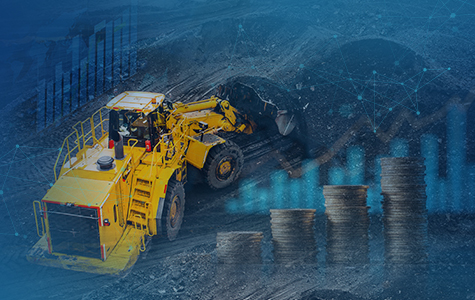Ever thought about the different routes which food has to cross and intersect before it reaches your platter? You get a taste and feel of globalization in the food you consume and realize how this movement of food blurs borders in a chain that connects farm with your fork. Production, processing, distribution and finally, consumption make up the food supply chain we know of. Through this chain, food moves in domino like motion in its journey from producers to consumers. Food supply chains are complex networks involving farmers, seed producers, fertilizer factories, financial institutions, millers, governments, industries, fair price shops, kirana stores, transporters and others having a bearing on the economic and political climate. Unlike other supply chain management systems, the food supply chain is riddled with complexities owing to factors like traceability, transparency and perishability of food products. An estimated one-third of the food produced is wasted each year –this amounts to around 1.3 billion tones- most of the losses stemming from inefficiencies in harvesting, shipping and storage. This underscores the need for optimizing the food supply chain management system by leveraging IT solutions for traceability and making critical decisions.

The Food Supply Chain- Blighted by Problems
When we think of the food value chain, there are problems galore. The foremost challenge here is traceability. As consumers grow more discerning, manufacturers and suppliers face a barrage of questions. Like, what is the origin of food they eat? What are the ingredients used and from where are they sourced? Tracking this entire food data trail is no cakewalk. But lack of traceability and transparency can create blind spots in the value chain and expose producers and suppliers to unforeseen risks. It can also give rise to litigations and force companies to face backlash from consumers. Usually, traceability is tough when the producers use manual, error prone systems. Next is the challenge of maintaining safety and quality of food products. The causes can be many- poor storage and warehousing practices, delays in transportation, industrial sabotage and inclement weather. These are the reasons for the growing count of food product recalls. And, they can impair a food company’s brand image. Problems can also arise when there is fragmented information or lack of ample communication among all actors in the food value chain. When systems are not seamless and inter-connected, each player has limited knowledge of what others in the chain are doing. This in turn causes inefficiency, waste and a chasm of mistrust between food producers and consumers. The other critical area is managing food inventories. There is a definite trade-off between keeping customers happy and containing inventory waste.
What an Automated System Can Deliver for Stakeholders
An automated, seamless system can integrate the fragmented food supply chain, by bringing together state as well as non-state actors. It can serve as a bankable supply chain management system for allocation, storage and transportation of food grains. In addition to traceability of food, such a system provides real-time visibility of all processes and streamlines record management. The system is capable of supporting basic functions like stock accounting at depots, quality analysis of food, ensuring transparency in collection from warehouses and generating alerts or notifications for suppliers, distributors and end consumers. In India, the Targeted Public Distribution System (TPDS) is testimony to how integrated systems have streamlined the food chain, injecting transparency and accountability in the system. Working in unison, both the federal government and states have gone for end-to-end digitization to check loss or pilferage of food in transit, combat food wastage and fix accountability by optimizing resources. TPDS is massive in its operations, boasting of 794.9 million beneficiaries served by 545,679 Fair Price Shops (FPS).
Emerging Technologies for More Secure Food Chains
As food supply chain systems evolve, use of emerging technologies can be the differentiator. Food producers and suppliers can bank on blockchain technology for deliver the transparency, traceability, and trust that has eluded the food industry for a long time. The use of blockchain can keep any data or transaction secure and immutable and simultaneously available ‘real time’. And, when we think of ‘real time’ visibility on inventory, automated tracking technologies like RFID and Internet of Things (IoT) can ensure data accuracy. IoT technologies like smart sensors which are designed with multi-functional ability are able to collect data under different situations such as temperature-sensitive condition for perishable products. Then, we can have ‘Adaptive Smart Robots’- they are specially designed by twining robotics and smart sensors so that they are able to fulfill some operations and capture data in parallel. They are useful in some extremely hazardous environment like super low temperature for ice cream or frozen seafood. Over to a subtle mix of niche technologies like Big Data Analytics, Cloud Computing and IoT to power food supply chain management to a ‘smart future’!
The article was first published on CEO Priyadarshi Nanu Pany's Medium profile.


























































We will verify and publish your comment soon.